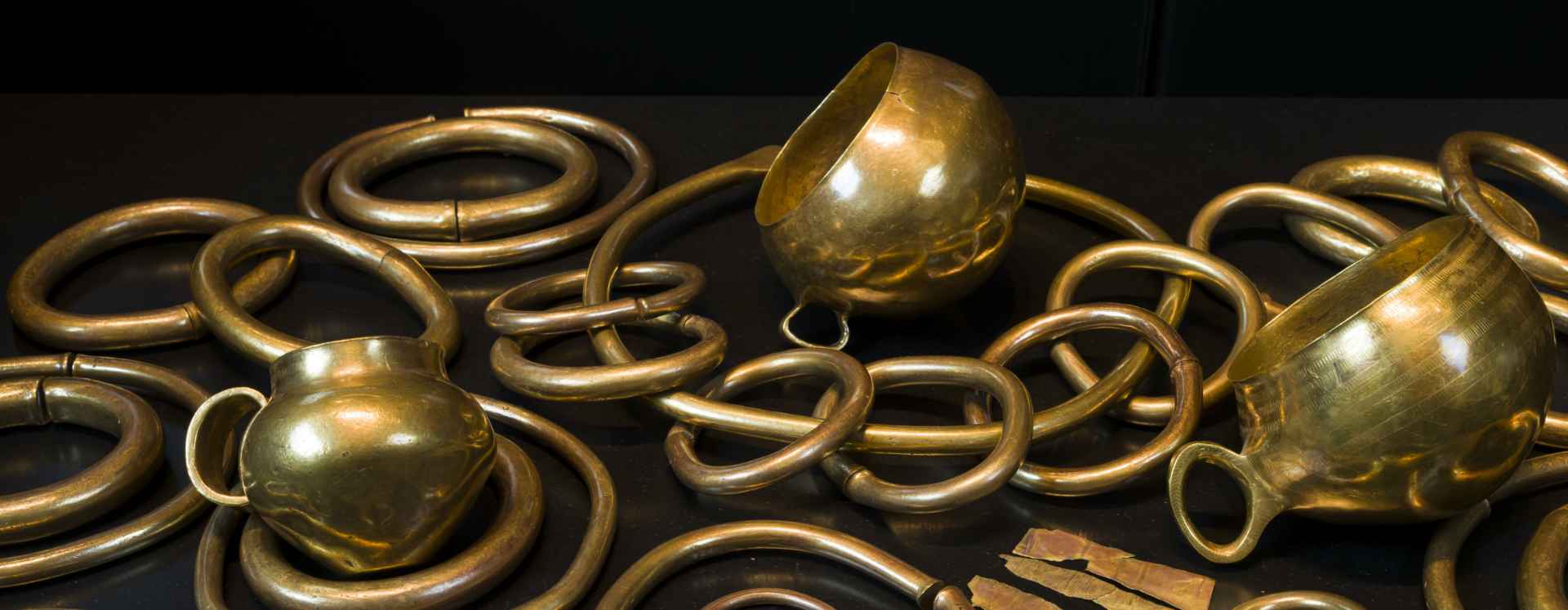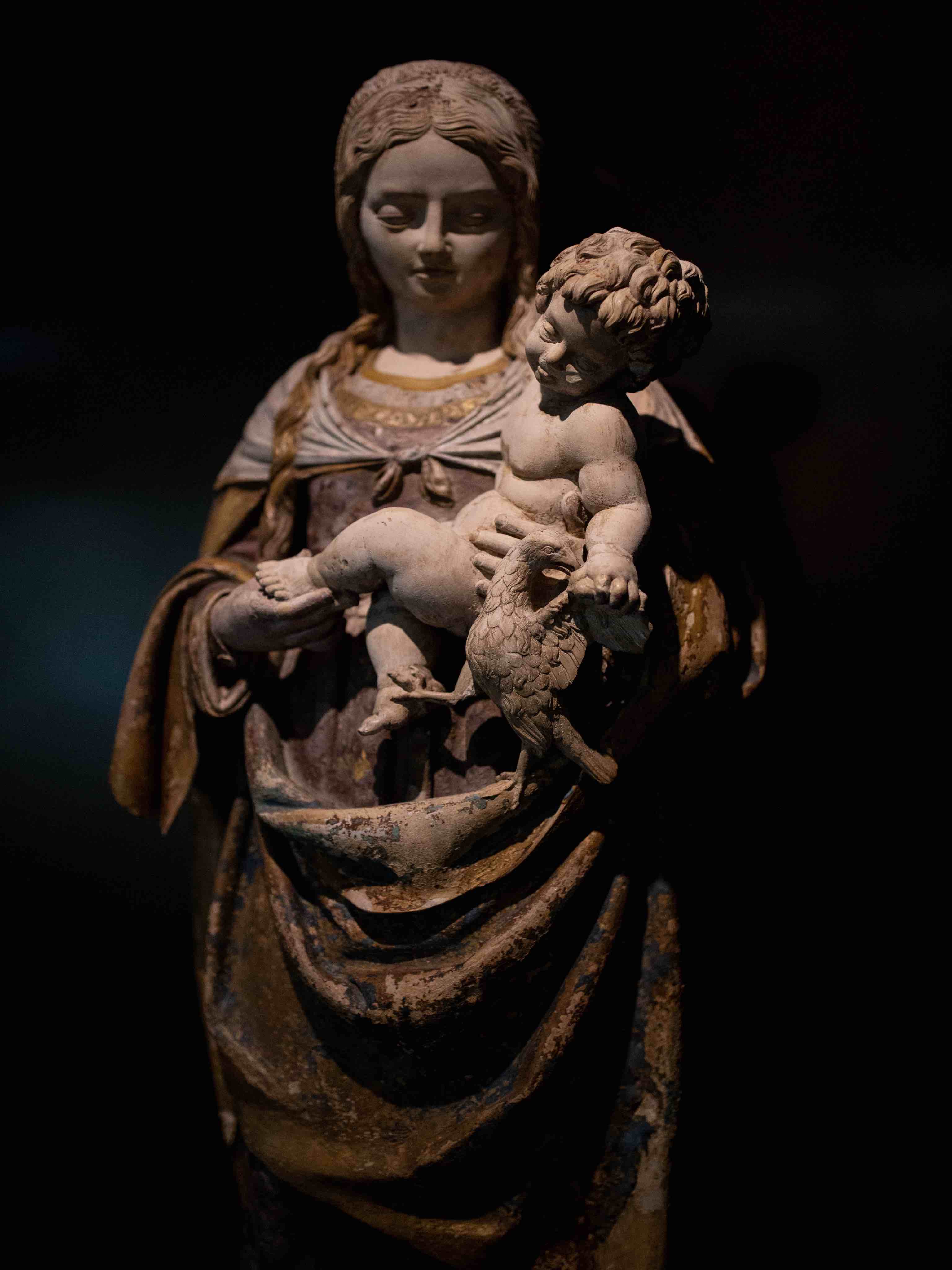Virgen Blanca (White Virgin)
The Virgen Blanca is considered one of the most beautiful representations of Mary of the Spanish Renaissance. It’s a clear example of the artistic exchange between Galicia and Portugal in the 15th and 16th centuries, as is attributed to the sculptor João de Ruão, one of the main representatives of the School of Coimbra.
Made of limestone from the Portuguese quarries in Ançã, it’s an impeccably executed work that depicts the Renaissance beauty ideal in the representation of the Mother, with her balanced pose and restrained expression, while heralding a new style evident in the robustness and curvature of the Child's body, Mannerism.
The piece, originally fully polychromed, corresponds to the iconography of the Virgin and Child with a little bird, which was very popular in the Renaissance. Although it’s interpreted in different ways, it may be inspired by the Christian symbolism of the goldfinch, a bird that feeds on thistle and is seen as a premonition of the martyrdom of Jesus.
One of the many interesting facts about the history of this carving is that it’s often said that the artist to whom it is attributed used to draw his inspiration from models close to him – his wife, for the Mother, and his children, for the Child.
Another is the obvious anachronism of Mary's clothing and hairstyle, as she doesn’t reflect the clothes and hairstyle of her time, but rather those of a wealthy Renaissance girl: long dress, vest, tight-fitting bodice, cloak and scarf over her shoulders, and headdress in the form of a skullcap with a veil and a tight bow.
Label
More information
Other outstanding works are on display alongside Virgen Blanca. Made in both limestone and granite, they are an example of the itinerancy of workshops and the exchange of works and materials at that time. This is the case of San Juan Bautista, from the San Juan de Poio Monastery; the Virgen de la Leche, from France, which was displayed in the church of the former Hospital de San Juan de Dios in Pontevedra; or the set of La Virgen del Socorro and Santa Ana, in the Santa María Church in Pontevedra, attributed to the master Corniellis of Holland.



